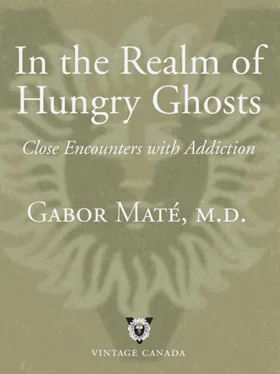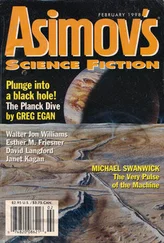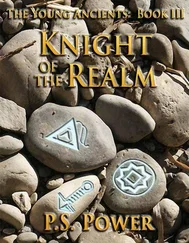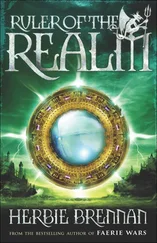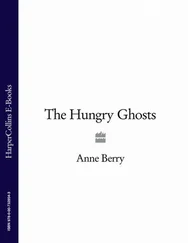We know something about how specific kinds of childhood trauma affect brain development. For example: the vermis, a part of the cerebellum at the back of the brain, is thought to play a key role in addictions because it influences the dopamine system in the midbrain. Imaging of this structure in adults who were sexually abused as children reveals abnormalities of blood flow, and these abnormalities are associated with symptoms that increase the risk for substance addiction. 18In one study of the EEGs of adults who had suffered sexual abuse, the vast majority had abnormal brain-waves, and over a third showed seizure activity. 19
These findings brought to mind a thirteen-year-old girl in my family practice who, apparently out of the blue, began to experience epileptic symptoms in the form of “absence spells.” She would completely “zone out” for brief periods of time. Once, on a baseball diamond, she stared glassy-eyed and immobile, completely deaf to her teammates’ shouts to swing the bat. She had similar spells in the classroom, lasting up to ten or twenty seconds. Her EEG was abnormal and the neurologist I consulted prescribed anticonvulsant medication. When I asked her in the privacy of my office if anything was stressing her, she simply said, “No.”
Nine years later, no longer epileptic, she revealed to me that her seizures had begun during a period of repeated sexual abuse by a family member. Typically for sexually abused children, she felt there was no one to turn to for help, so she “absented” herself instead.
It gets worse. The brains of mistreated children have been shown to be smaller than normal by 7 or 8 per cent, with below-average volumes in multiple brain areas, including the impulse-regulating prefrontal cortex; in the corpus callosum (CC), the bundle of white matter that connects and integrates the functioning of the two sides of the brain; and in several structures of the limbic or emotional apparatus, whose dysfunctions greatly increase vulnerability to addiction. 20In a study of depressed women who had been abused in childhood, the hippocampus (the memory and emotional hub) was found to be 15 per cent smaller than normal. The key factor was abuse, not depression, since the same brain area was unaffected in depressed women who had not been abused. 21
I mentioned abnormalities in the corpus callosum, which facilitates the collaboration between the brain’s two halves, or hemispheres. Not only have the CCs of trauma survivors been shown to be smaller, but there is evidence of a disruption of functioning there as well. The result can be a “split” in the processing of emotion: the two halves may not work in tandem, particularly when the individual is under stress. One characteristic of personality disorder, a condition with which substance abusers are very commonly diagnosed, is a kind of flip-flopping between idealization of another person and intense dislike, even hatred. There is no middle ground, where both the positive and the negative qualities of the other are acknowledged and accepted.
Dr. Martin Teicher, Director of the Developmental Biopsychiatry Research Program at McLean Hospital in Maryland, suggests the very intriguing possibility that our “negative” views of a person are stored in one hemisphere and our “positive” responses, in the other. The lack of integration between the two halves of the brain would mean that information from the two views, negative and positive, is not melded into one complete picture. As a result, in intimate relationships and in other areas of life, the afflicted individual fluctuates between idealized and degraded perceptions of himself, other people and the world. 22This sensible theory, if proven, would explain a lot not only about drug-dependent persons, but also about many behavioural addicts.
Here I must admit to a shudder of recognition. I sometimes operate as if I were two different people: my view of things can be either very positive or highly cynical and pessimistic, and often dogmatically so. When I’m watching the happy channel, my negative perceptions seem like a crazy dream; when stuck in the dejected mode I can’t recall ever having felt joy.
Of course, the moods and perceptions of my drug-addicted patients swing on pendulums far wilder and more erratic than mine. To some extent these extreme oscillations must be drug induced, but they also reflect the faulty brain dynamics that resulted from my patients’ uniformly miserable childhood histories. Extreme circumstances breed extremist brains.
Such differences between a behavioural addict like me and the hardcore Skid Row addicts may place us worlds apart in social functioning and status, but the point remains that the chronic injection drug user is only at the far end of a continuum. Milder disruptions in early childhood experience and brain development can and do occur, and often result in “milder” forms of substance use or in non-drug, behavioural addictions.

Early trauma also has consequences for how human beings respond to stress all their lives, and stress has everything to do with addiction. It merits a brief look here.
Stress is a physiological response mounted by an organism when it is confronted with excessive demands on its coping mechanisms, whether biological or psychological. It is an attempt to maintain internal biological and chemical stability, or homeostasis, in the face of these excessive demands. The physiological stress response involves nervous discharges throughout the body and the release of a cascade of hormones, chiefly adrenaline and cortisol. Virtually every organ is affected, including the heart and lungs, the muscles and, of course, the emotional centres in the brain. Cortisol itself acts on the tissues of almost every part of the body—from the brain to the immune system, from the bones to the intestines. It is an important part of the infinitely intricate system of checks and balances that enables the body to respond to a threat.
At a conference in 1992 at the U.S. National Institutes of Health, researchers defined stress “as a state of disharmony or threatened homeostasis. ” 23According to such a definition, a stressor “is a threat, real or perceived, that tends to disturb homeostasis. ” 24What do all stressors have in common? Ultimately they all represent the absence of something that the organism perceives as necessary for survival—or its threatened loss. The threat itself can be real or perceived. The threatened loss of food supply is a major stressor. So is the threatened loss of love—for human beings. “It may be said without hesitation that for man the most important stressors are emotional,” wrote the pioneering Canadian stress researcher and physician Hans Selye. 25
Early stress establishes a lower “set point” for a child’s internal stress system: such a person becomes stressed more easily than normal throughout her life. Dr. Bruce Perry is Senior Fellow at the Child Trauma Academy in Houston, Texas, and the former Director of Provincial Programs for Children’s Mental Health in Alberta. As he points out, “A child who is stressed early in life will be more overactive and reactive. He is triggered more easily, is more anxious and distressed. Now, compare a person—child, adolescent or adult—whose baseline arousal is normal with another whose baseline state of arousal is at a higher level. Give them both alcohol: both may experience the same intoxicating effect, but the one who has this higher physiological arousal will have the added effect of feeling pleasure from the relief of that stress. It’s similar to when with a parched throat you drink some cool water: the pleasure effect is much heightened by the relief of thirst.” 26
The hormone pathways of sexually abused children are chronically altered. 27Even a relatively “mild” stressor such as maternal depression—let alone neglect, abandonment or abuse—can disturb an infant’s physical stress mechanisms. 28Add neglect, abandonment or abuse, and the child will be more reactive to stress throughout her life. A study published in The Journal of the American Medical Association concluded that “a history of childhood abuse per se is related to increased neuroendocrine [nervous and hormonal] stress reactivity, which is further enhanced when additional trauma is experienced in adulthood.” 29
Читать дальше
